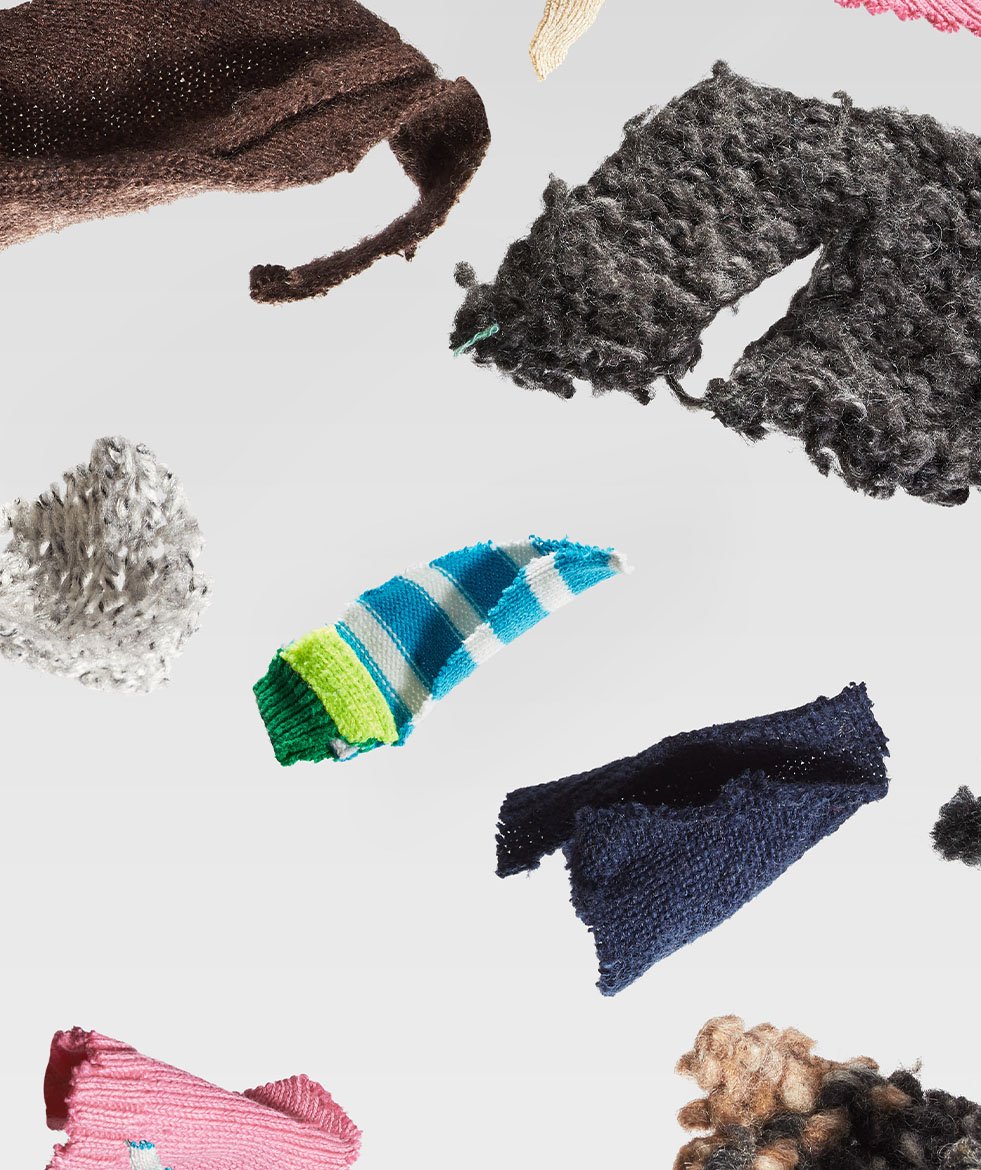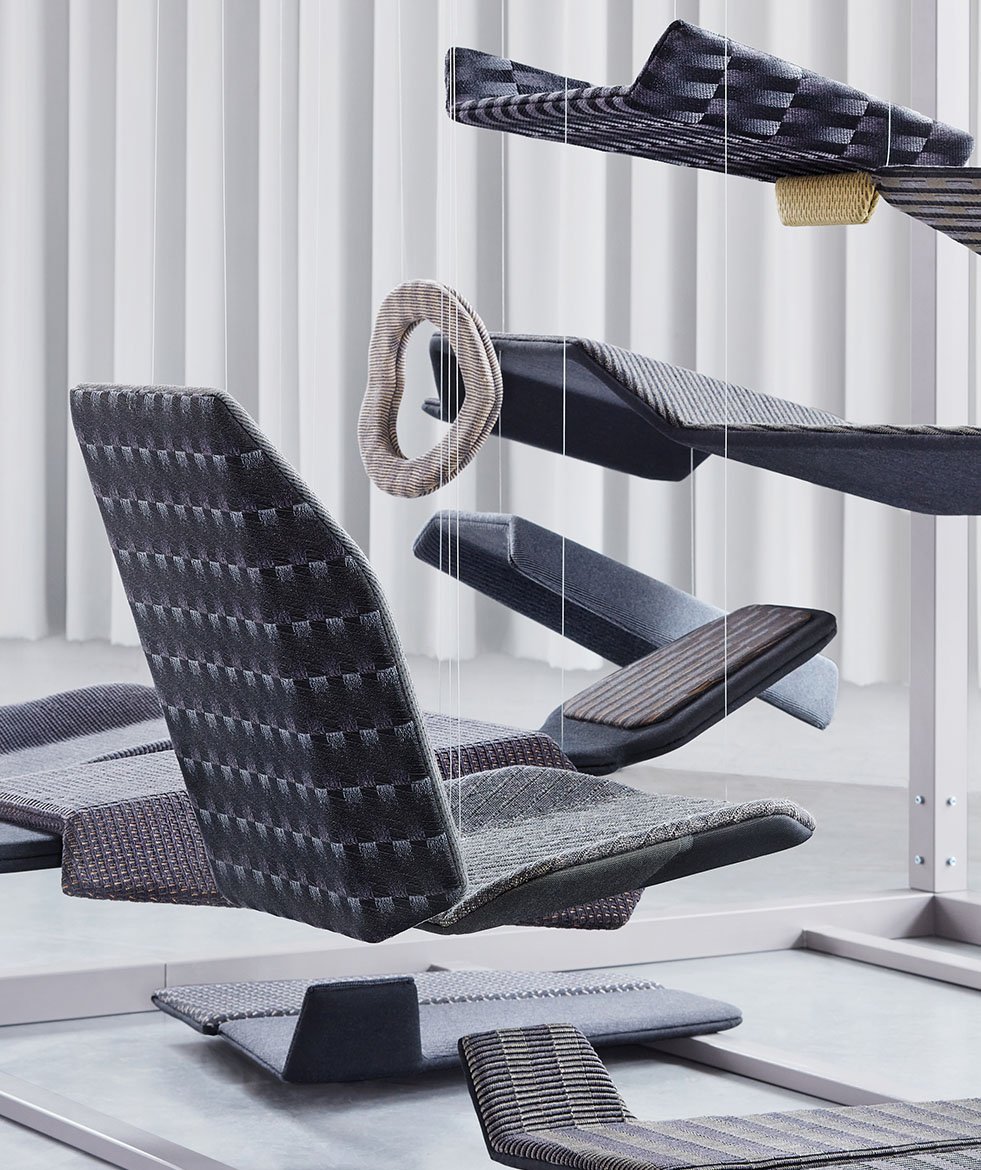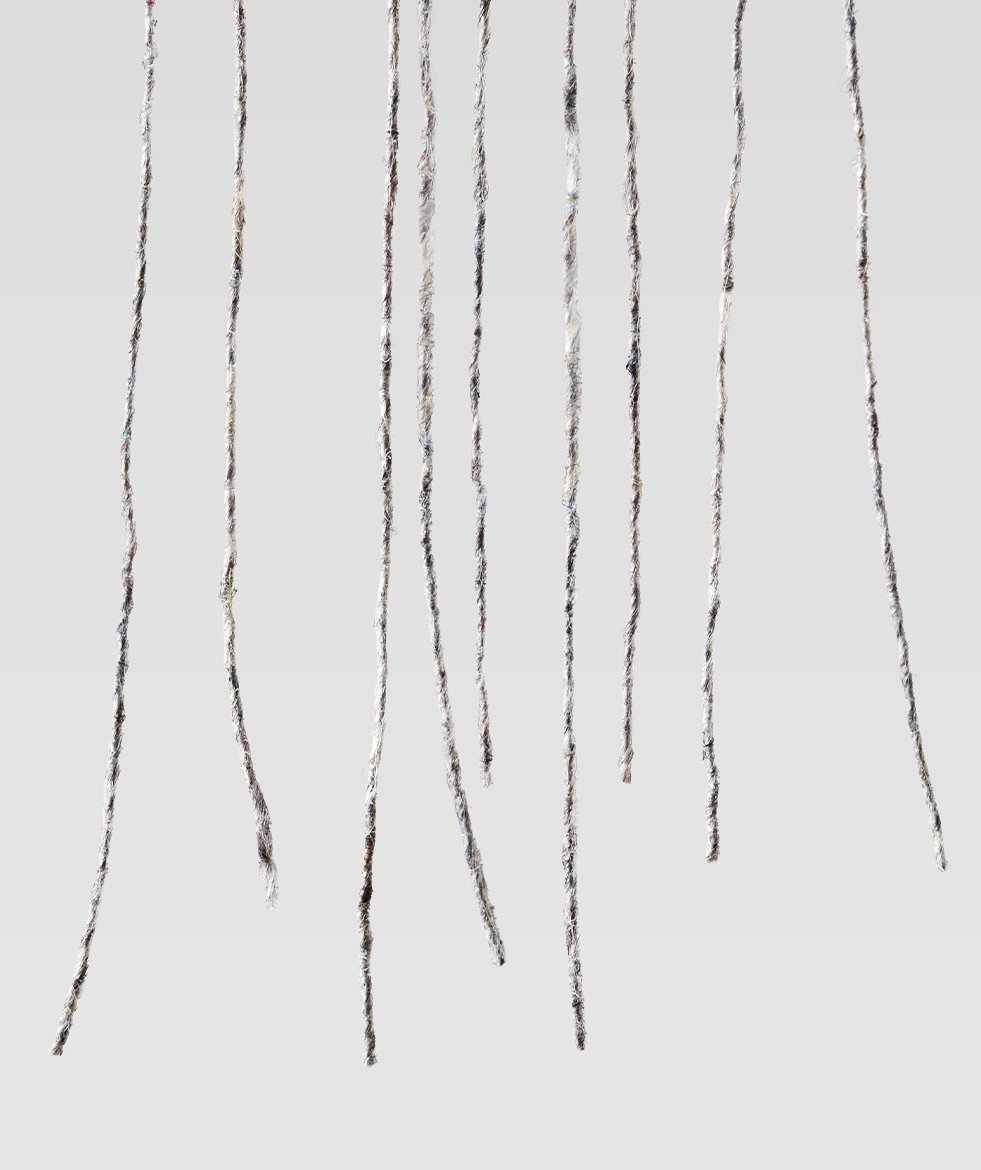Fibers in collaboration with Envisions
text Fred Erik
the material lookout
Fibers
The textile industry is one of the most polluting ones out there. Every second, the volume of a garbage truck filled with both used and unused clothing ends up in a landfill.

The consortium of imat, C2C ExpoLab, FBBasic, Texperium, and Trützschler has been pioneering in recycling textile waste and developed their Mixed Fibers Recycled yarn. They took on the challenge of creating a yarn from multiple fiber sources that meets the highest quality standards. This aim arose from the industry since textile waste isn’t only high in volume, it contains several types of fibers, materials, colors, and quality levels, which are impossible to sort industrially. From 2013 onwards they* researched industrial methods of deconstructing mixed textiles into usable fibers, which can then be spun into yarns that can compete quality-wise with their predecessors. This raw material can then be processed into different woven textiles and textile applications. Exemplary for the developed technique is the absence of chemical processes, making the process more sustainable than similar initiatives.
For the launch of this new yarn, imat-uve reached out to Dutch designlab Envisions to translate these processed fibers into tangible suggestions of applications. With exceptional attention to tactility, material, and colour, Envisions applied its distinctive hands-on approach into both woven and knitted textile samples. Lifting the collaborative aspect of this project to higher grounds, the process of all participating designers was presented and an immersive installation, Fibers Unsorted, that evokes a familiar, automotive-inspired atmosphere. This visual link is deliberate, given that automotive materials must meet the highest standards out there. Although hinting at multiple applications and usages, the abstract installation leaves plenty of room for imagination and possible applications in indutries beyond automotive.

Only a minor share of this waste re-enters our daily lives as low-quality materials, such as insulation. This mountain of waste isn’t solely an environmental eyesore, it’s a nearly inexhaustible material source for new beginnings. Although there is a lot of discarded textile to work with, turning this goldmine into durable high-quality materials is extremely challenging.
Leading the way towards a sustainable textile future is Econyl, whose nylon yarns are entirely made from waste. Regenerating post-consumer products such as abandoned fishing nets, carpets, and rigid textiles, it’s a positive alternative to standard nylon which is made from an oil by-product. Sharing the same features as its virgin counterpart, Econyl can be woven into both stretchy and rigid textiles, making it suitable for diverse applications such as apparel and furnishings.
An exemplary application of Econyl is the Silky Shades carpet by Desso. Referring to the shine and luxurious looks of silk, the rug features an irregular surface with subtle reflections that are reminiscent of water. Being entirely made from recycled nylon, the material is suitable for intensive use and easy to clean, making it suitable for any room in the house.
Another application can be found in the interior of Link & Co’s electrical vehicles. While strongly believing in the future of shared mobility, the company needed a wear-resistant material that can handle frequent use. Econyl, with its sturdy qualities, was the perfect partner to furnish all interior seating.

Together, Econyl and the Mixed Fibers Recycled yarn both illustrate how textile waste can be the start of something new. They show the potential of recycled yarns in various applications without compromising qualitywise. Instead of being an inferior alternative to new materials, they paint an exciting picture of a circular textile industry that’s less harmful to the environment. They twist the negative connotations of textile waste into a positive fu-ture scenario full of exciting possibilities.
* For the development of the Mixed Fibers Yarn, the consortium that consists of imat, C2C ExpoLab, FBBasic, Stichting Texperium, and Trützschler joined foreces for the project, which is supported by the European Union within the framework of the INTERREG Germany- Netherlands program and co-financed by the North Rhine-Westphalian Ministry of Economic Affairs, the Dutch Ministry of Economic Affairs and Climate, and the provinces of Limburg and Overijssel. The joint project aims to reduce the CO2 footprint of textiles and strengthen the textile industry in the Rhine-Meuse region. The process and product innovation are to be used to establish the textile industry in the border region between Germany and the Netherlands as an innovative leader in the field of mixed fiber recycling and textile recycling management.
materials by



